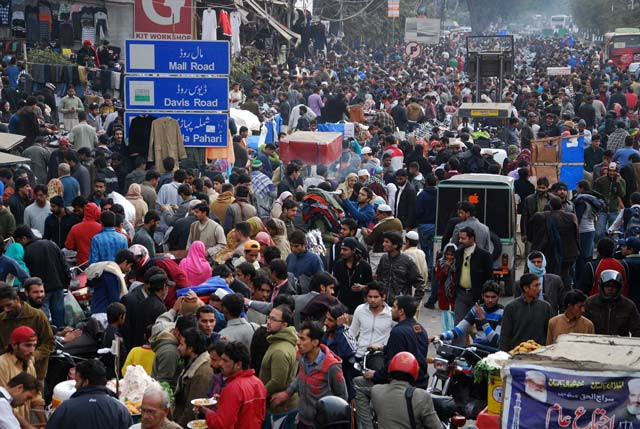Why Pakistan is too big to feed
Industrial waste flowing into water streams is damaging crop yield, rendering it cancerous

Pakistan’s population growth and economic wellbeing are intertwined. On the one hand, we project population dividend as a massive target market. On the contrary, economic boom and bust cycle is wreaking havoc on prospects for future generation.
Both parameters are inversely proportional and deserve equal attention.
It is no secret that Pakistan feels the strain on forex reserves and balance of payments whenever economic growth touches 5% per year. No wonder, why each subsequent fall in currency from Rs60 in the 2000s to 250sh in 2022 has pushed millions into poverty and middle class trap after a sigh of relief for a few years.
Thus, finance minister does have a point when he terms devaluation as the “mother of all evils” but the root causes thereof – low export growth – are yet to be aggressively and sustainably addressed.
Not only our exports have low value but they are also getting irrelevant to the globally changing consumption pattern. Now, not many people care of denim jeans and home textile.
The often ignored part is import. Gravitational growth in population is a national economic security risk. With the rising headcount, local food production is domestically consumed instead of being exported.
Similarly, the land reserved for export of raw material – cotton and sugarcane – is repurposed to meet the growing food needs of the population. “Plotistanization” of agricultural land is playing its part as well.
Until and unless large-scale water-storing dams are constructed, the area under cultivation will be decreasing. Industrial waste flowing into water streams is also damaging crop yield, rendering it cancerous and low yielding.
Water conservation strategies and pricing is the need of the hour to maintain food supply balance for 250 million odd people per year.
With the rising unproductive population growth, fiscal strain on the exchequer is increasing. Unless tax revenues from a human being outweigh the dollar-consuming imports in the life cycle, the economics of rising population is unfeasible and not reducing long-term economic risk.
Every unproductive child – if cannot be productive in the tax net or export industries – is contributing fractionally to the probability of balance of payments crisis.
Unfortunately, policymakers have not put in proper efforts and have not utilised resources, which are needed to tame it. Politicians bank on their rural vote bank where population growth is the highest.
Electoral reforms should limit the impact of incentives with the number of seats vis-a-vis population. Urban dwellers are naturally tilting towards compact families due to a higher living cost but the rural population is a ticking time bomb on the resources.
Through the BISP or Ehsaas programme, incentives should be limited to two children only. Bus fares for two children should be subsidised.
Dashboards should be created with food import requirement, export contribution and opportunity cost of domestic consumption for all districts, cities and provinces. Competition and reward are necessary toolkits in modern policymaking.
In our region, Bangladesh has successfully controlled population growth since independence and focused on an export-oriented economy with a successful track record. No wonder, its GDP per capita is nearly twice that of Pakistan. Takka is not “takay ka” anymore.
We’ve already lost decades due to economic mishandling. With decisive reforms, merit-based decisions, political will and fairer socio-economic society, tide can still turn.
We have lost millions of talent to outside Pakistan, who are financing consumption needs of millions more in the country. It’s akin to an educated elder brother spending on inefficient younger siblings. One day, he’d stop.
The writer is an independent economic analyst
Published in The Express Tribune, November 14th, 2022.
Like Business on Facebook, follow @TribuneBiz on Twitter to stay informed and join in the conversation.



















COMMENTS
Comments are moderated and generally will be posted if they are on-topic and not abusive.
For more information, please see our Comments FAQ